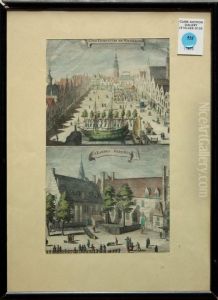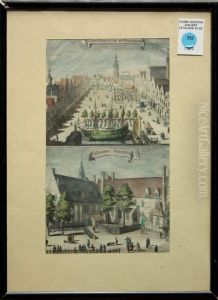Ambrosius Gabler Paintings
Ambrosius Gabler was a notable figure in the world of art, particularly within the realm of German painting and engraving during the late 18th and early 19th centuries. Born in 1762, Gabler's contributions to art were primarily during a period that straddled the end of the Baroque era and the dawn of Romanticism, a time when European art was undergoing significant transformations in style and thematic focus. His work, while not as widely recognized today as some of his contemporaries, played a role in the evolution of visual arts during this pivotal era.
Gabler's artistic journey was reflective of the broader shifts in European art, as artists moved away from the strictures of religious and royal patronage towards a more personal, emotive expression. While there is limited information on his early life and training, it is evident that Gabler was skilled in engraving and painting, mediums that were crucial to the dissemination of art and ideas at the time. His engravings, in particular, demonstrate a meticulous attention to detail and a mastery of technique that was highly valued in his era.
Throughout his career, Ambrosius Gabler was engaged with the cultural and intellectual currents of his time, including the Enlightenment and the early rumblings of Romanticism. This period was marked by a growing interest in nature, emotion, and individualism, themes that can be discerned in Gabler's work. Though specific details of his oeuvre are scant, it is known that he contributed to the visual culture of his time through both religious and secular subjects, showcasing the versatility and depth of his skills.
Gabler's death in 1834 marked the end of a career that was intertwined with a transformative period in European art. While he may not have achieved the enduring fame of some of his contemporaries, his work remains a testament to the rich artistic landscape of late 18th and early 19th-century Germany. Ambrosius Gabler's legacy, encapsulated in his engravings and paintings, provides insight into the shifting aesthetics and values of his time, making him a figure of interest for historians and art lovers alike.

